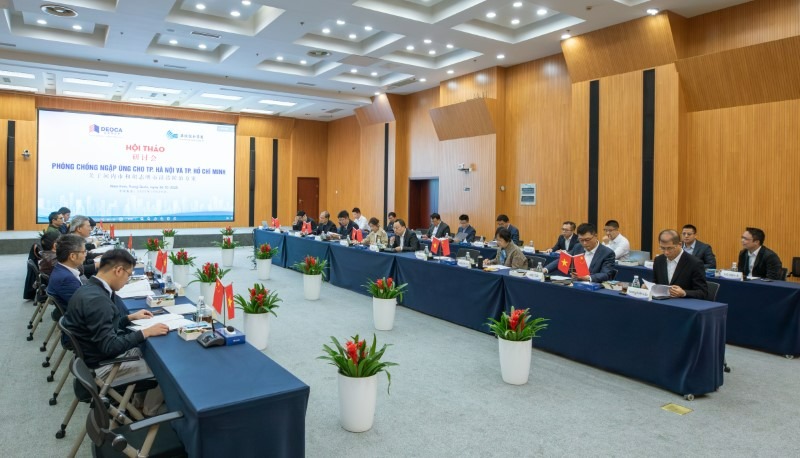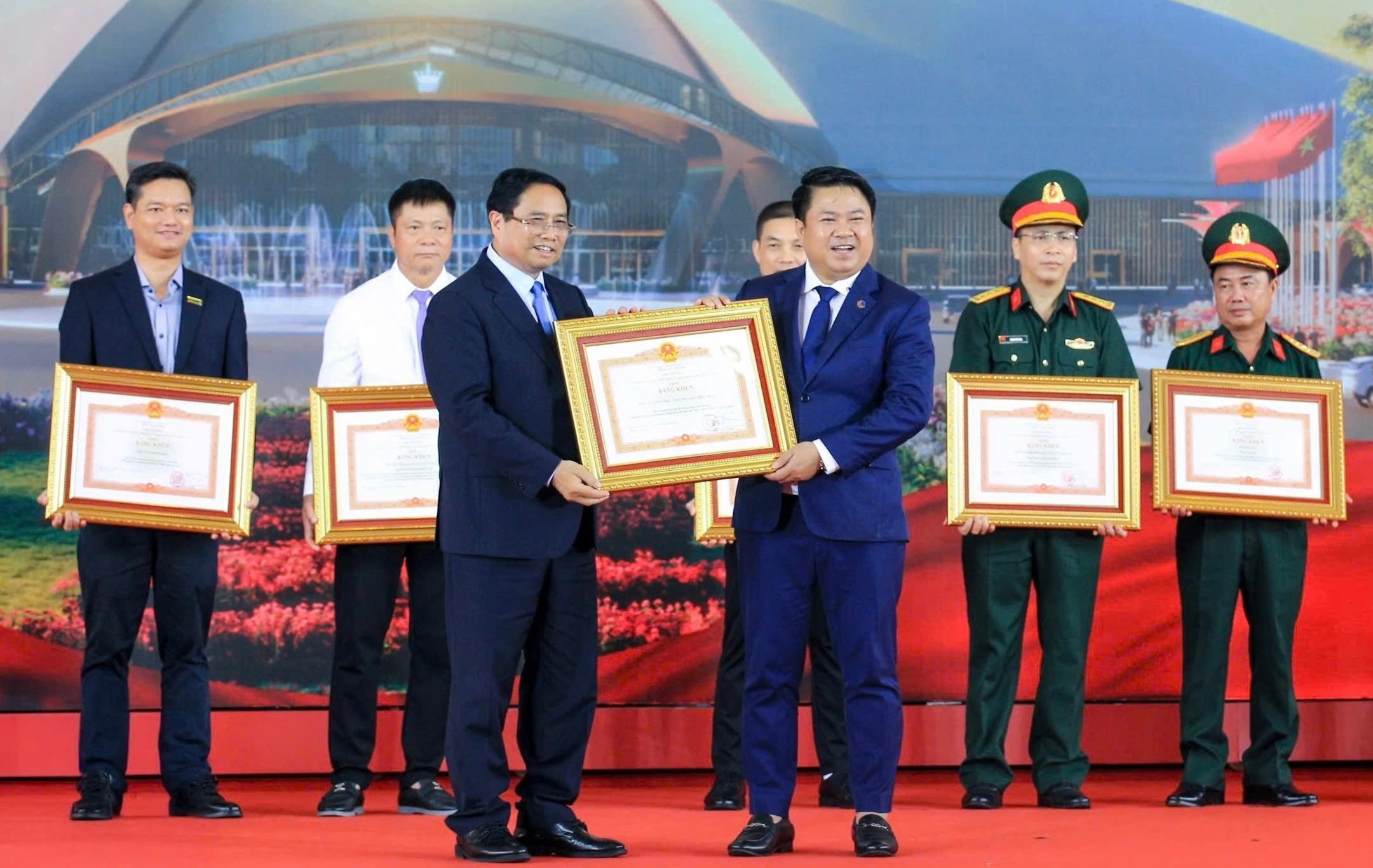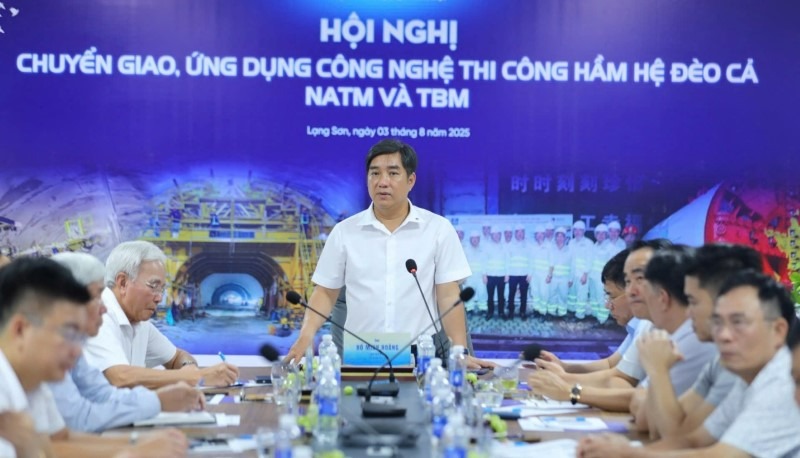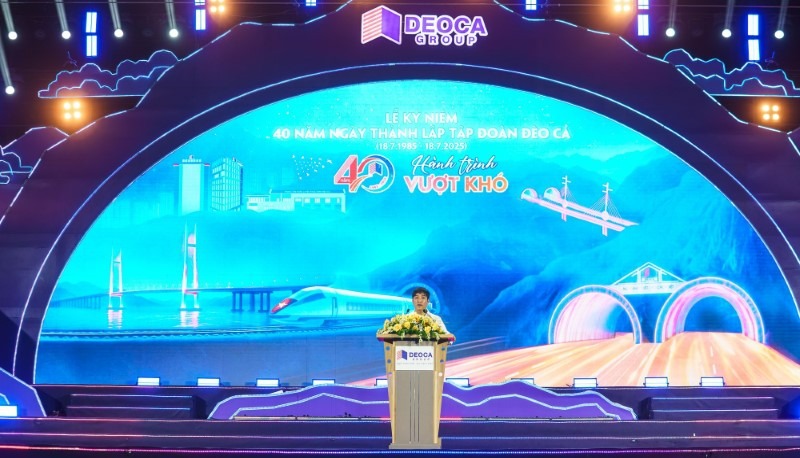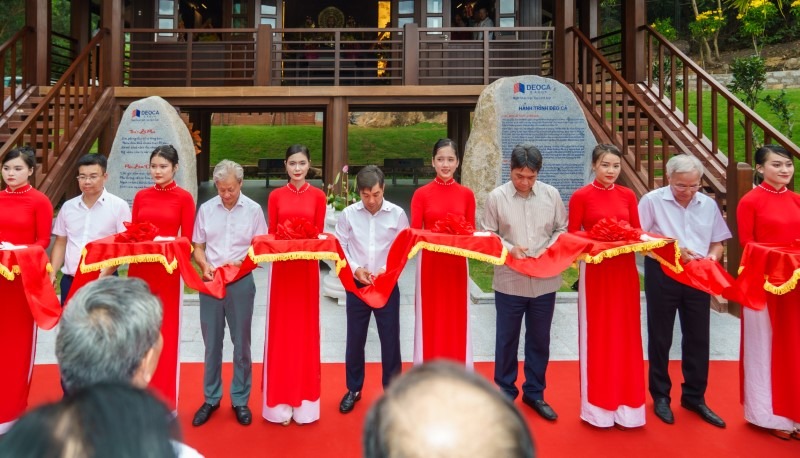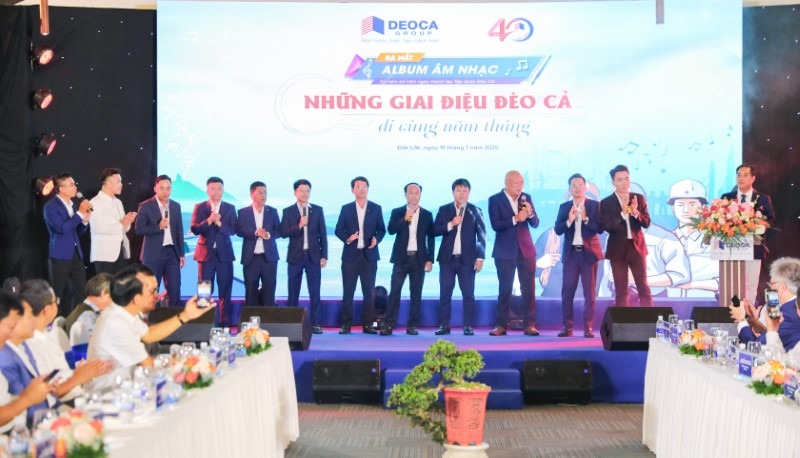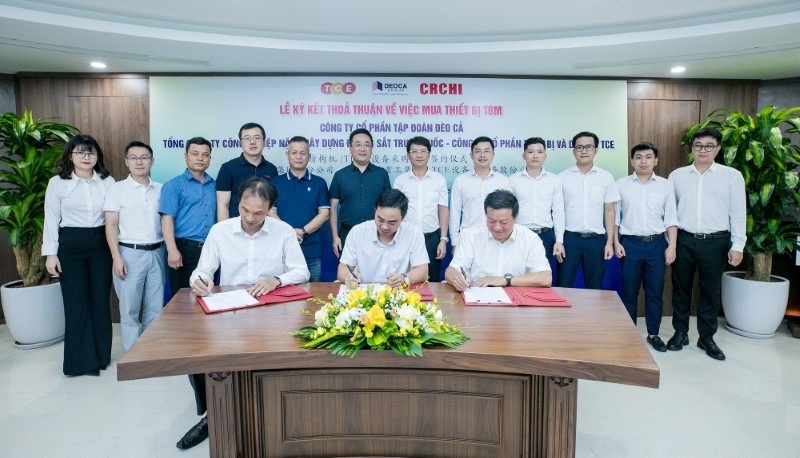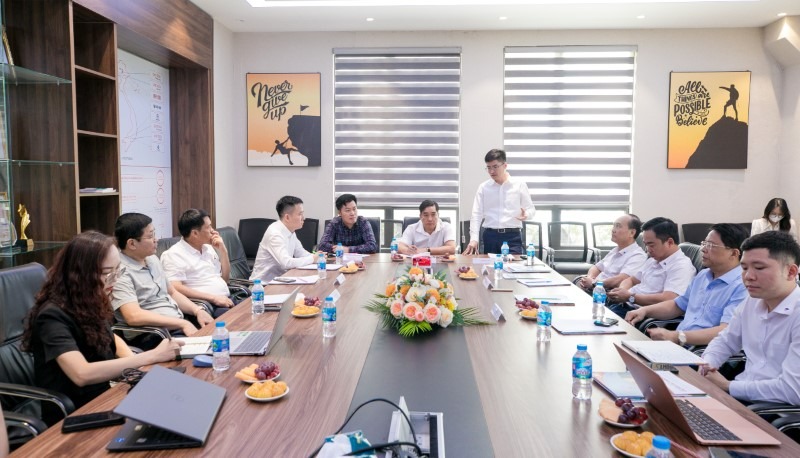Inside Hai Van mountain, the air is thick, the temperature is 38 Celsius degree and stuffy, in the deafening sound of the drills up to a few meters long, poking deep into the stone, Vo Son Hai - a tunnel engineer said: “We are going to complete the tunnel digging work, more than 6000 meter would be completed in less than 3 years”.
Secrets to conquering the mountain
Mr. Vo Son Hai is a Deputy Director of Construction executive Board LX1. He looks more than 40 years old with a muscular body but gentle personality as opposed to the heavy work he is doing.
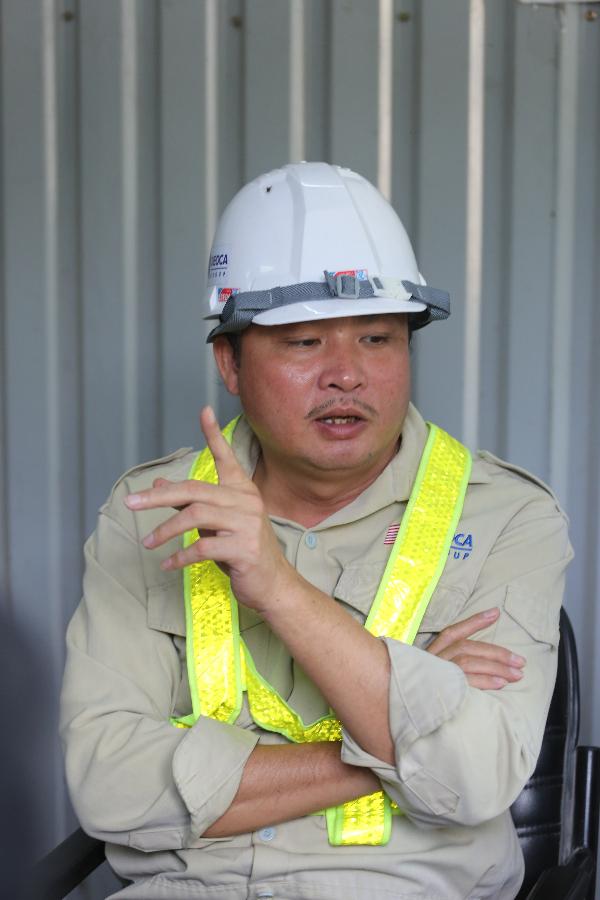
Mr. Vo Son Hai, Deputy Director of LX1 Construction Executive Board
Mr. Vo Son Hai updated their construction work: “The tunneling organizations organize the construction of 3 shifts per day with many different stages. Axial space to open the dome construction, infrastructure to the road there. With a coordinated combination in the construction solution, Hai Van 2 tunnel is gradually improving and maintaining the tunnel opening schedule as originally planned”.
In the same shift working deep inside the mountain, “veteran” Vu Sy Chien, one of the most experienced miners, pointed to the tunnel arch saying: “With the space in a mirror tunnel of only about 70m2 but with experience of tunnel workers, they have organized construction from the work: drilling, blasting, excavating, loading, ventilation, reinforced anchors, completed the concrete, all the processes are scientifically carried out and not stacked”.
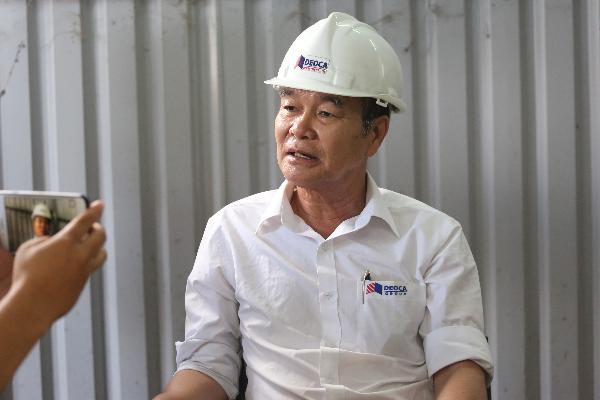
Vu Sy Chien “tunnel digger”
The leader of the tunnel miners is Mr. Bui Hong Dang, if not introducing the title, the new person having difficulty recognizing this engineer is the CEO of tunnel packages of DEOCA Group. Bui Hong Dang did not wear a cool suit and tie but he also wore protective clothing directly with his brothers to the tunnel. The CEO of tunnel packages rarely talks, or laughs, few people know that he is a true “general” with a lot of creativity in the construction. Dang told me: “We completed the construction from Deo Ca, Co Ma to Cu Mong, and when Cu Mong is finished, we are going to Hai Van 2”. This engineer has been present at the important projects of Deo Ca since the very first days.
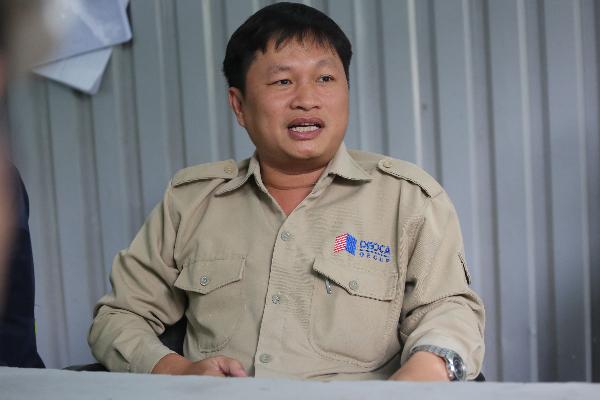
Mr. Bui Hong Đang, CEO of tunnel packages of DEOCA Group
Talking about the secret of digging a tunnel, Dang scratched his head and smiled. “Vietnamese are good at learning and creating”. Vietnamese tunnel workers at the Hai Van tunnel project are also the first to access construction technology with extremely modern and sophisticated technology of Austria, abbreviated NATM (New Austrian Tunneling Method). NATM technology is applied to tunnel excavation by drilling method, supported by crossbows combined with shotcrete. From tunnel projects in South Central Vietnam, Vietnam is the first among developing countries to have boldly applied NATM tunneling technology to the construction of tunnels in traffic, achieving high efficiency and cost savings.
For them, the tunnel through Hai Van Pass is also a miracle because they have successfully implemented Co Ma, Deo Ca and Cu Mong. “There is a mountain school which makes us gain more experiences to improve construction methods, shorten time, reduce investment costs. From experience of learning from foreign experts, through supervision consultancy, construction of Hai Van I tunnel, then directly drilling Ca mountain pass tunnel (4,200 meters), Co Ma pass (500 meters), Cu Mong (2600) meters), currently more than 6000 meters of Hai Van 2, together with self-study and self-research through documents, a team of Vietnamese engineers and workers have mastered NATM tunneling technology, reaching a high level of the world.
Along with Bui Hong Dang, Vo Son Hai and Nguyen Sy Chien, Hai Van century project will list other tunnel miners such as Tran Ngoc Sam, Bui Danh Nghia, Nguyen Dinh Diep and the people of DEOCA Group as “Soldiers” at the front line of the construction.
Crossing the sea to cross Hai Van
Duong Dinh Manh, Director of the management board of the bridge and road bidding packages, took the task of deploying the path of crossing the sea to the Hai Van tunnel at a very young age, just over 30. It was a big responsibility. When arriving in Hai Van, Manh could not imagine this place would have such a “spectacular” cross-sea navigation system.
When coming here to survey the design, Mr. Duong Dinh Manh could not help hesitating when the conditions of geology, soil as well as the Central climate were severe. At the foot of Hai Van mountain pass, very high wind speed adversely affects the construction of bored piles. The work needed to be done exactly as: Piling the working floor, lowering the pipe wall, installing reinforced cage would be very difficult. On the other hand, the construction process was also influenced by the ebb and flow from the sea to Da Nang water front. This place is also a region with great sediment so the geological base is very weak. However, all these disadvantageous factors have been reviewed and discovered by Mr. Duong Dinh Manh and his engineers, and they found the most optimal plan.
“Our construction is facing two alternatives, one is to prevent the water flow to make roads, it will not be complicated but affect the ecosystem and life of people inside the seaport. Only the bridge over the sea will ensure both ecosystems and convenient traffic for vehicles to enter the tunnel in a convenient way, along with the construction impact on topography and habitat. The most difficult is the underwater construction span. We had to build up locally. Measures using high concrete grade design components, calculating reasonable thickness enough to prevent erosion. There were 6 points of simultaneous construction, each one had 20 people. Now the overpass is ready with the Hai Van tunnel to come into service in 2020” said Mr. Duong Dinh Manh.
Regarding the days on the bridge crossing the construction site, the enthusiastic Director could not hide his excitement. “At that time, most of the brothers were in their youth, so they were all dynamic. For us, being trusted to participate in constructing a bridge that contributes to the creation of a great work of the country is a great honor. With an unprecedented amount of work and being heavily rubbed with conundrums on construction solutions, many engineers and workers have been matured a lot”.

Inside Hai Van 2
From the airplane window when leaving Da Nang International Airport, from now on, anyone can observe the shape of the overpass system gliding to be completed, into the sea and then plugging directly into the foot of Hai Van mountain in a spectacular way. From now on, people not only look at but also directly use the work crossing Hai Van entirely made by the Vietnamese. A milestone for the country’s infrastructure construction industry is added.
Xuan Thanh


